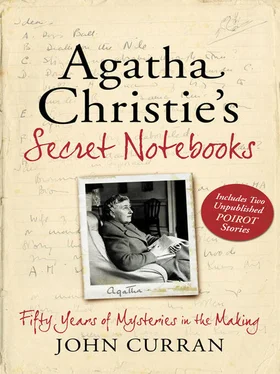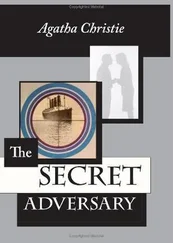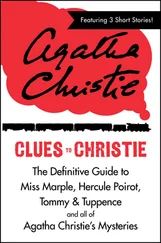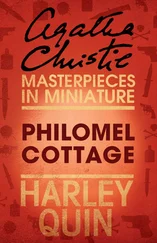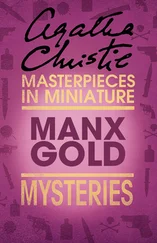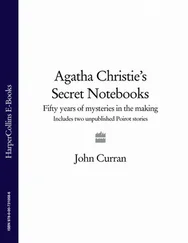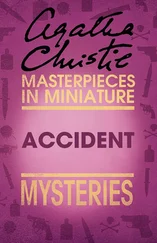Plans
Death on the Nile
Miss Marple?
Mrs P (ex wardress of American prison)
Mathew P son—nice
Mrs Mathew P—nice
Miss P nervy hysterical girl
Master P Boy of 20—excitable
Dr. Pfeiffer—doctor and toxicologist
Mrs Pfeiffer—recently married to him—35—attractive—with past
Marc Tierney—archaeologist—a little apart from the rest
Mrs Van Schuyler—boring American woman elderly snobbish
Mrs Pooper cheap novelist
Miss Harmsworth—girl companion to Miss Van Schuyler
Miss Marple
Rosalie Curtis sickly girl
Mrs Gibson—non stop talker
The first and biggest surprise in this list is the (double) inclusion of Miss Marple—first with, and later without, a question mark—rather than Hercule Poirot. Prior to this, the only novel in which Miss Marple had appeared was The Murder at the Vicarage in 1930, and her next novel appearance, The Body in the Library, was still a further five years away in 1942. Moreover, the 1932 short story collection The Thirteen Problems, set firmly in the parlours of St Mary Mead, could hardly be seen as a preparation for an exotic Egyptian adventure. In 1937 the Nile was as exotic to the majority of Christie readers as Mars is to her current audience: very few travelled abroad for holidays, if, in fact, they took holidays at all, and the days of the package holiday remained a distant mirage. So to transport Miss Marple from the (admittedly relative) safety of St Mary Mead to the banks of the Nile and subsequently to the Temple of Karnak, Abu Simbel and Wadi Haifa may have been seen as a journey too far—hence Poirot was substituted. Miss Marple eventually gets to solve a case abroad but not until almost 30 years later, when her nephew Raymond sends her on a holiday to the fictional island of St Honore. There she solves A Caribbean Mystery, her only foreign case.
In contrast, at this stage Poirot was a seasoned traveller—and, of course, a foreigner to begin with. Since his arrival in Britain he had solved cases in a variety of distant locations—France ( The Murder on the Links, The Mystery of the Blue Train, Death in the Clouds), Yugoslavia ( Murder on the Orient Express) and Italy ( The Big Four and ‘Triangle at Rhodes’). His most recent case had involved solving a Murder in Mesopotamia. Indeed he had already visited Egypt and the Valley of the Kings while solving ‘The Adventure of the Egyptian Tomb’ in 1923. All things considered, Poirot was a much more likely sleuth to board SS Karnak for a particularly blood-soaked journey down the Nile.
Some of the remaining names also provide material for speculation:
Mrs P (ex wardress of American prison)
Mathew P son—nice
Mrs Mathew P—nice
Miss P nervy hysterical girl
Master P Boy of 20—excitable
In these five characters can be seen the seeds of the Boynton family from 1938’s Appointment with Death (see Chapter 8). Mrs P is described as a wardress in an American prison exactly as, two years later, the monstrous Mrs Boynton would be; the ‘nice’ son, Mathew and his wife Mrs Mathew, are the forerunners of Lennox and Nadine Boynton, while the ‘nervy and hysterical’ Miss P corresponds to Ginevra. Raymond is the last remaining male of the Boynton family although he could hardly be described as an ‘excitable boy’. It is interesting that, although Christie decided against using this family in Death on the Nile, when she did utilise them she placed them in another foreign setting, this time Petra.
Mrs Van Schuyler—boring American woman elderly snobbish
And in a later note:
Mrs Van Schuyler—a well known confidence trickster
Miss Harmsworth—girl companion to Miss Van Schuyler
The only character to remain as described—with a modification from Mrs to Miss—is Miss Van Schuyler, although her idiosyncrasy changes from confidence trickery to kleptomania. Miss Harmsworth became Cornelia Robson, the unfortunate niece of that ghastly snob.
Mrs Pooper cheap novelist
The unhappily named Mrs Pooper eventually became Salome Otterbourne, who specialised in outspoken novels of love and sex. One of her titles, ‘Snow upon the Desert’s Face’, is almost the same as the early, unpublished non-crime novel written by Agatha Christie herself, Snow upon the Desert. This was probably a personal joke inserted by Christie for the amusement of her family.
Rosalie Curtis sickly girl
Rosalie Curtis may well have changed to Rosalie Otterbourne, daughter of the ill-fated Salome.
Some possible plot developments are sketched on the pages following the cast list. Note that ‘P’, i.e. Poirot (‘but P proves that…’), has now firmly replaced Miss Marple:
Dr. Pfeiffer’s wife has been recognised—he decides to do away with Mrs. Oger
Wife of (Dr. Pfeiffer) herself is thief or murderer etc.—makes up story that someone has stolen ring or poison etc. and brooch A.M. seen in glass. She knows that A.M. is in lounge with others at that time but P proves that M.A. is real lettering
or
M.A. idea and yellow dress M.A. has not yellow dress—woman with yellow dress has not initial A.M.
Dr. Elbes—very ill man—had known her at St. John’s prison Pfeiffer mentions his researches the castor oil plant
Now then A. Who killed her?
B. Why?
Although the Pfeiffers were never to feature in any Christie work, some of these ideas were to resurface in other books—a stolen ring in Hickory Dickory Dock and the prison wardress in Appointment with Death.
But the main idea is the symmetrical letters of the alphabet and how confusion can arise depending on whether they are seen directly or through a mirror. A half page of Notebook 30 lists all of these letters, ‘H M A W I O T U V Y’, and a further list of possible female names starting with each one. (X is omitted presumably on the basis that names beginning with X are rare.) Christie finally settled on Isabel Oger, hence the reference to Mrs Oger above. This idea was eventually incorporated into Dumb Witness, also published in 1937, although with completely different names. Whether it was ever in fact intended as a plot device for Death on the Nile is debatable, despite the fact that the scenario Christie sketched involved the Pfeiffers from the list of characters for that novel. Adding to this doubt is the fact that there are no characters on the list with either the initials AM or MA.
Almost the final note for this title in Notebook 30 reads:
The Plan
Nellie is heard saying ‘I wish she were dead—will never be free till she’s dead.
Nellie is one of the names appearing on the list of reversible initials (‘Helen, Wilhelmina’) but the words she utters are very similar to the opening line, overheard by Hercule Poirot, of Appointment with Death. ‘You do see, don’t you, that she’s got to be killed?’ This, taken in conjunction with the Mrs P’s former profession and the make-up of her family, can be seen to form the basis of the later novel.
Four-Fifty from Paddington 4 November 1957
While travelling to visit her friend Miss Marple, Elspeth McGillicuddy witnesses a murder committed on a train running parallel with hers. During the search for the body, attention focuses on Rutherford Hall, home of the Crackenthorpe family. Miss Marple and her agent Lucy Eylesbarrow investigate.
All the notes for this title are contained in four Notebooks—3, 22, 45 and 47—amounting to 40 pages. Four-Fifty from Paddington was received at Collins in late February of 1957. The date at which it is set, and its writing, are contemporaneous. The story opens on 20 December (1956)—‘It was quite dark now, a dark dreary, misty December day—Christmas was only five days away’ (Chapter 1)—but apart from Miss Marple attending Christmas dinner at the Vicarage where she discusses local maps with Leonard Clement, the vicar’s son, there is no further mention, or atmosphere, of the holiday season.
Читать дальше
Конец ознакомительного отрывка
Купить книгу
